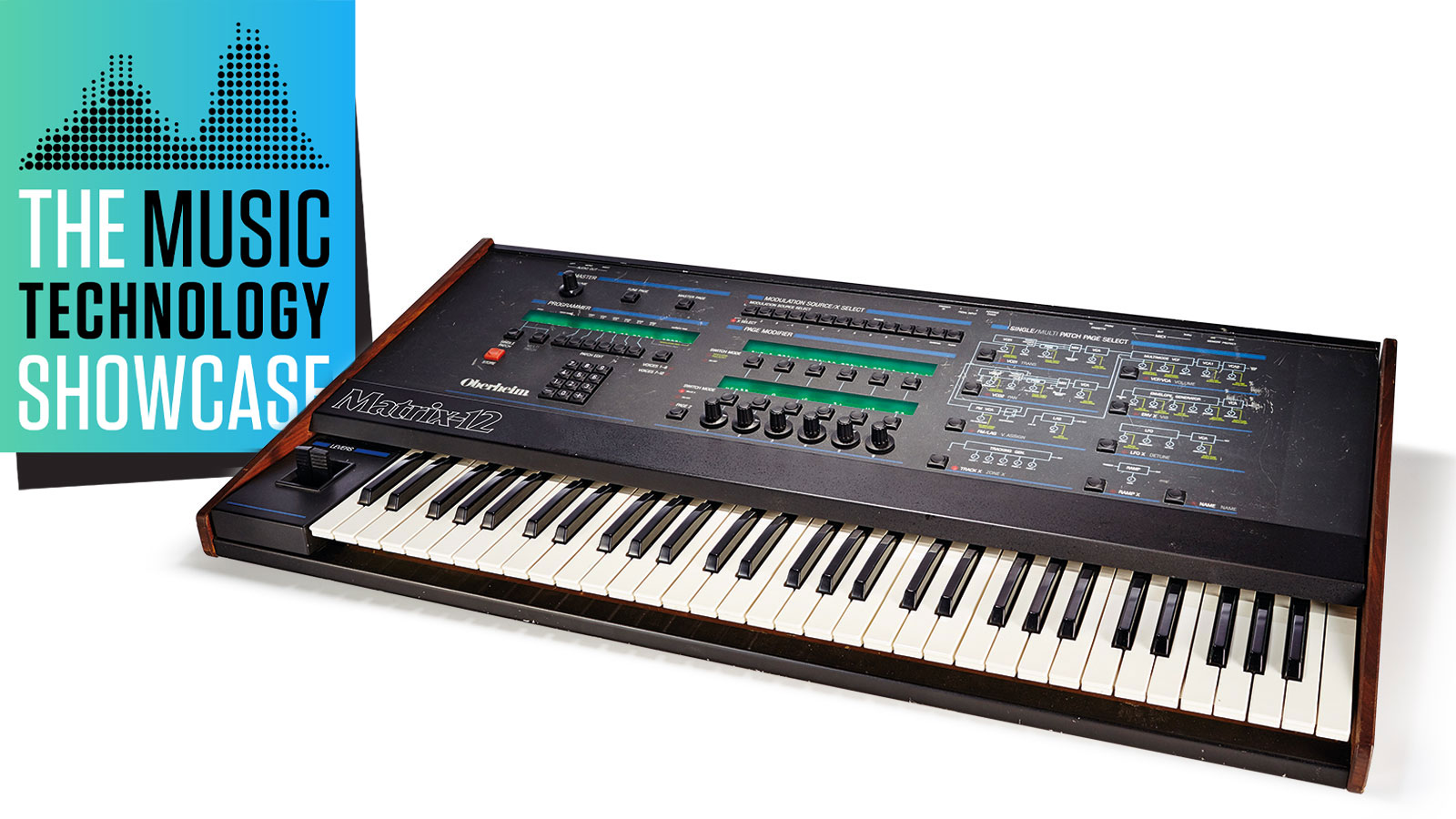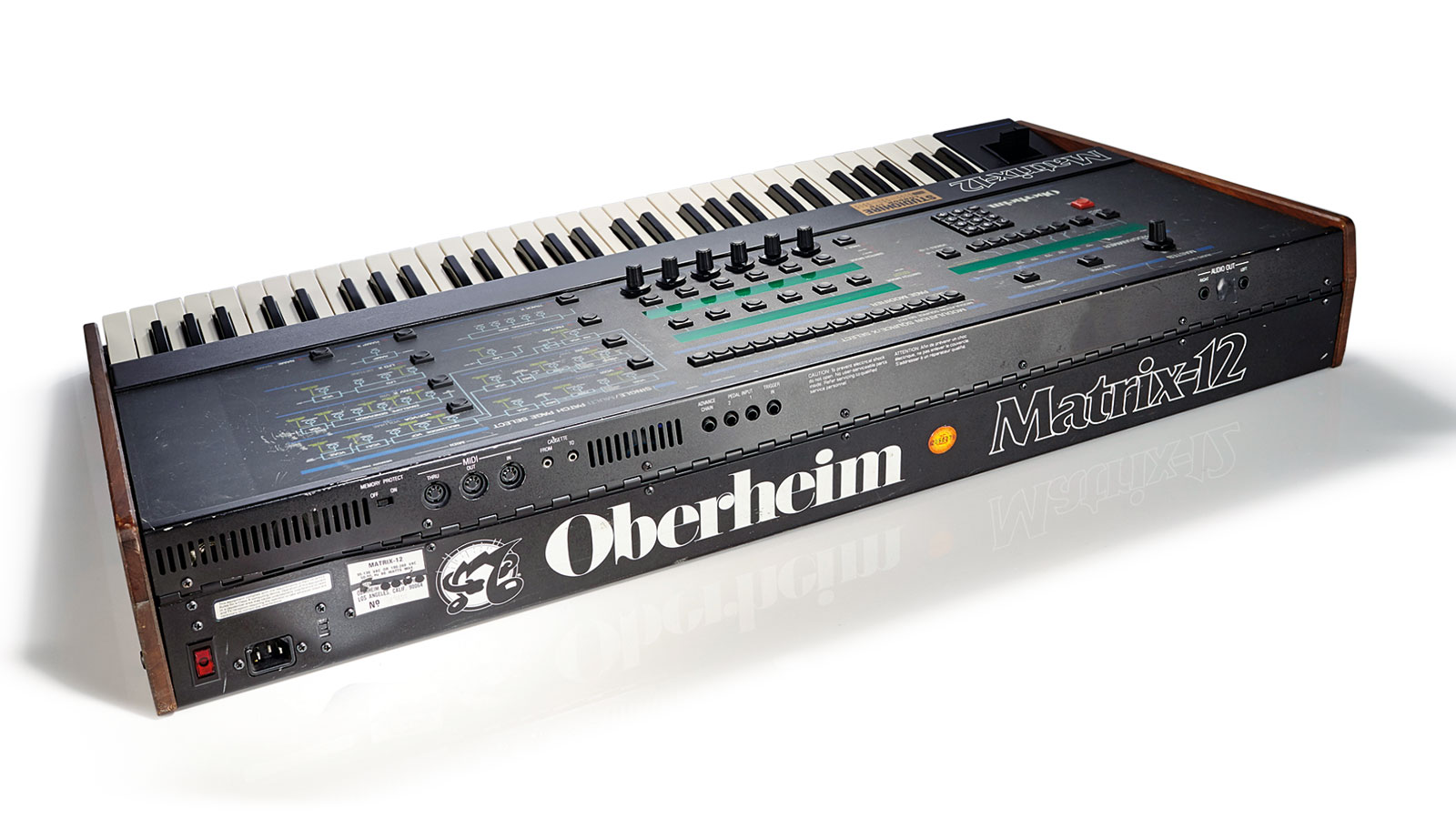Vintage music tech icons: Oberheim Matrix 12
Oberheim’s Xpander and Matrix 12 are two the most flexible synths ever

Music Tech Showcase 2021: The six-voice Xpander first appeared in 1984 and a year later the 12-voice Matrix 12 was released. Aside from the extra voices, there are no sound differences with the 12 – it’s just two Xpanders with a keyboard attached.
Let’s get one thing straight, this is an analogue synth with digital control. The sound is pure analogue and, while it’s not as fat and punchy as some earlier Oberheim models, it has so many different sound-shaping possibilities under the hood it’s one of those instruments you’ll never tire of.
Oberheim aimed high and cleverly realised there was a place for a matrix based patching system that gave close to the same control possibilities as a purely modular design. On the pure analogue side the Xpander has 12 VCOs (two per voice) and a 15 mode VCF (that’s right, 15…). The digital control comes in with the five LFOs, five envelopes, three tracking generators, three ramps and a Lag generator.
The user interface is complicated but with a bit of familiarity it falls easily under the hand
The user interface is complicated but with a bit of familiarity it falls easily under the hand and there is also very comprehensive MIDI implementation which gives plenty of scope for those of us that like to manipulate a sound in real time. It’s also multi-timbral.
There are 100 basic sound patches but these can be brought into any one of the 100 multi patches which can have up to three separate MIDI zones. These can be great for performance patches or big layered sounds.
With all these features it’s hard to know where to start but as this is an analogue synth let’s look at that first.
Complex sounds
The Oscillators both have Triangle, Saw and Pulse waveforms and Oscillator 2 also has a Noise option. These waveforms are mixable so you can get some pretty complex sounds going before you even start to think of modulating and there is also an FM processor which can get some bell- like tones going. These then feed into the 15 mode VCF. This has a mixture of Bandpass, Hi Pass, Lo Pass and Phase in differing combinations which work to radical effect.
Want all the hottest music and gear news, reviews, deals, features and more, direct to your inbox? Sign up here.
Just after the filter come two VCAs. As you can modulate these VCAs and all the parameters of the VCF and the VCO with multiple and independent sources, you have in effect a modular synth in front of you.
In fact, as you can have up to six modulators per parameter it’s possible to make patches that are impossible to do with an old modular analogue synth as there simply aren’t that many patch connections available. The VCOs sound typically Oberheim – fat and warm but with a real clarity and edge; not as raw as earlier Obie’s but substantial and characterful.
Those filters are all very different and add an amazing amount of colour in whichever combination you use. The variations in tone are extreme to say the least and the power of the combination filters like three notch plus one low-pass can create some very dramatic noises. But the real power of the Xpander is in the modulation possibilities…
Give me five!
As with the Oscillators and Filter, when you select a modulator it comes up on the central control panel and each modulator can also have its various parameters modulated. The envelope generators are of the DADSR (delay, attack, decay, sustain and release) type and they have various modes (reset, freerun, dadr) and some trigger options.
If you’ve lived most of your life with only one or two envelopes, five is a real luxury. Having dealt with the oscillators and filter and still having envelopes free to modulate LFO rates and the like means you can really get in there and fine-tune individual elements of sounds. For example, emulating more natural-sounding vibrato is much easier when you can delay its onset with an envelope and then modulate the LFO rate with another LFO.
The ramps and lag generator make portamento, fades and sweeps a doddle and the tracking generators give you even more control over things like pitch to filter or pitch to modulation depth.
Add to that the two MIDI levers, velocity sensitivity, aftertouch and off velocity and you have some very serious performance and programming capabilities too. That matrixed modularity gives you enormous scope for creating highly individual musical sounds, but also leaves plenty of options for sound designers to make some pretty weird noises.
There’s a Matrix 12 lurking in the studio of many a Hollywood sound designer, often when its analogue and digital contemporaries have left the building
There’s a Matrix 12 or an Xpander lurking in the studio of many a Hollywood sound designer, often when its analogue and digital contemporaries have left the building.
The fact that you can then take the patches you have made and put them into Multi’s means that you can get some great combination sounds going too, especially if you are looking at monophonic or duophonic sounds.
You assign individual single patches to the voices and then each voice can have a pitch (in semitones), stereo pan, level and vibrato setting set individually. MIDI is divided into three zones which means you can have up to three separate MIDI channels.
Each zone has controls for MIDI channel selection, limits and mode. The modes include Rotate, Re-Assign, Reset, Uni-Lo, Uni-Hi and Uni Last. Each voice can be assigned to a particular zone or CV input, so you can layer up some amazing mono sounds or build performance patches.
It’s a very complex and flexible beast.
Verdict
The Xpander and Matrix 12 are two of the most flexible analogue synths ever made
Original RRP £5,980 | Used from £3,500
Buying a used Oberheim Matrix 12
If you are going to spend £2,500, here’s how to pick a good one…
1. The first thing is to check physical condition. Xpanders and Martix 12s are pretty solid but make sure the front panel isn’t bowed and that all of the buttons work consistently. I’ve seen quite a few where certain buttons stick down due to the front panel being a bit bent, which can get very frustrating.
2. Check all patches work and make sure you save at least one single and one multi patch and then re-select it. The last thing you want is a complex machine like this with memory problems. MIDI dump the memory as soon as you get it home.
3. Check all the outputs, MIDI and pedals etc. A machine like this is an investment but only if everything is working. Getting it up to spec after purchase can be very expensive. Better to pay a little more for something upfront than fork out a fortune later, chasing down an elusive problem.


Future Music is the number one magazine for today's producers. Packed with technique and technology we'll help you make great new music. All-access artist interviews, in-depth gear reviews, essential production tutorials and much more. Every marvellous monthly edition features reliable reviews of the latest and greatest hardware and software technology and techniques, unparalleled advice, in-depth interviews, sensational free samples and so much more to improve the experience and outcome of your music-making.

